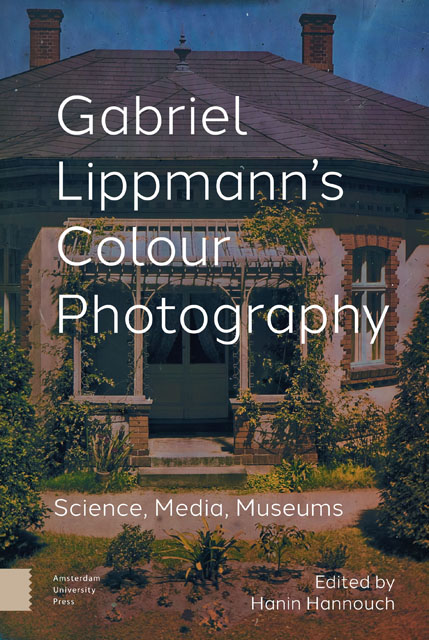Book contents
- Frontmatter
- Table of contents
- Gabriel Lippmann’s Colour Photography: A Critical Introduction
- Part I The Science of Colour Photography and the Colour Photography of Science
- Part II Media History, Aesthetics, and Culture
- Part III Contemporary Reception and Future Trajectories
- Afterword: Building Bridges over Standing Waves
- Index
8 - From Maxwell to Mercury: The Cultural History of Gabriel Lippmann’s Colour Photography
Published online by Cambridge University Press: 16 November 2022
- Frontmatter
- Table of contents
- Gabriel Lippmann’s Colour Photography: A Critical Introduction
- Part I The Science of Colour Photography and the Colour Photography of Science
- Part II Media History, Aesthetics, and Culture
- Part III Contemporary Reception and Future Trajectories
- Afterword: Building Bridges over Standing Waves
- Index
Summary
Abstract
This article presents discussions of the curatorial team of the “Farbe im Photo” exhibition (Cologne 1981) had when dealing with Lippmann photography as part of the history of its modern reception. It uses these reflections to re-integrate Gabriel Lippmann in his cultural milieu and to complicate his relationship to it in several ways. His knowledge of the importance of colour to the arts ca. 1900 and his implicit understanding of the link between liquid mercury to colour. As such, the Lippmann process can be understood in all its nuances; both scientific and cultural.
Keywords: museum exhibition, mercury, interferential colour photography, aesthetics, cultural history
While preparing Farbe im Photo, one of the first exhibitions in the Germanspeaking world on the history of colour photography in 1981, the curatorial team I was part of – together with Siegfried Gohr, Gert Koshofer, and Klaus op ten Höfel – stumbled upon a small glass plate that looked like a cassette in the possession of the Deutsches Museum in Munich, with the photograph of a stuffed parrot that struck its viewers with a brightness of colours unparalleled to any other specimen in this field (Gohr 1981, 72). We learned that the photograph was made by Richard Neuhauss, a renowned anthropologist and frequent author in photographic magazines at the time, after a photographic process designed by Gabriel Lippmann who had received the Nobel Prize for this invention in 1908, the first in the field of physics with the help of photography (Lippmann 1894). Of course, we traced some material from and about Lippmann in museums worldwide. We reserved for the exhibition a number of colour photographs on paper from several imaging technologies as well as one or the other portrait of the scientist in his lab at the Sorbonne University in Paris (Gohr 1981, 284, 4). Fairly soon, the interest in Lippmann and his process among us diminished into the corner of scientifically interesting but medially – or even artistically – unsatisfying displays.
- Type
- Chapter
- Information
- Gabriel Lippmann's Colour PhotographyScience, Media, Museums, pp. 199 - 210Publisher: Amsterdam University PressPrint publication year: 2022



